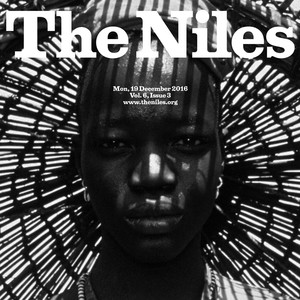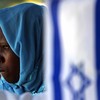4/Marriage: Bonds forged in traditionsA shimmering ritual

The high bed is covered with a plush, red cloth brocaded in gold, a large circular flat pot with two conic pieces of red and black wood, several small circular pots containing scented powder to be put on the newlyweds’ heads, a large incense burner to burn expensive sandalwood incense, two small glasses containing milk, which the couple will pour on each other as a good omen ushering in a happily ever after, some ornaments made of beads and red sapphire, and a bracelet made of red soft silk to be wrapped around the groom’s wrist. The groom’s head is wrapped in a silk with a crescent-shaped piece of gold in the middle.
These rituals are part of Jirtig, a Sudanese tradition that has been passed on through generations. Sudanese families in northern, central and western Sudan still cling to it. Jirtig dates back to the beginning of the Nubian civilisation, one of the earliest in north-eastern Africa (2000 BC). Jirtig is the most important marriage ritual in Sudanese culture and older women warn of marital failure if it is not performed.
Glitter of gold
The couple wears traditional Sudanese uniforms where the bride wears a red dress embroidered in gold, dyes her hands and feet with henna, and dons a gold earring in her nose and wears a golden crown, while the groom wears a galabia (a long robe) made of luxurious white cloth with red and golden brocade.
The couple is surrounded by female relatives, especially older women, headed by the oldest – often the mother or grandmother of either the bride or the groom – who carry out the Jirtig steps of putting the scented powder on the couple’s heads, wrapping the bracelet around the groom’s hand, and hanging the ornaments around the bride’s neck. Then the milk is sprinkled. Sacrifices and grilled meat, fruits and sweets are offered to the guests.
Fatima Mohammad, a Sudanese elder, said that Jirtig was more important than the wedding itself, with older women like herself spending more time preparing the Jirtig ritual than the wedding and the white bridal dress, which is a foreign cultural aspect that was adopted over time.
“In the past, the wedding was only limited to the Jirtig, ripping apart the belt, and the bride’s dance,” says Muhammad of the tradition of ripping apart the belt where the bride stands on the Jirtig bed and wraps a belt of gold ornaments and candy around her waist. The groom then rips apart the belt and throws it in the air to be caught by girls wishing to get married.
During Jirtig, women and girls sing popular songs, mainly: “Oh white and beautiful bride! Oh angels be with her!”





